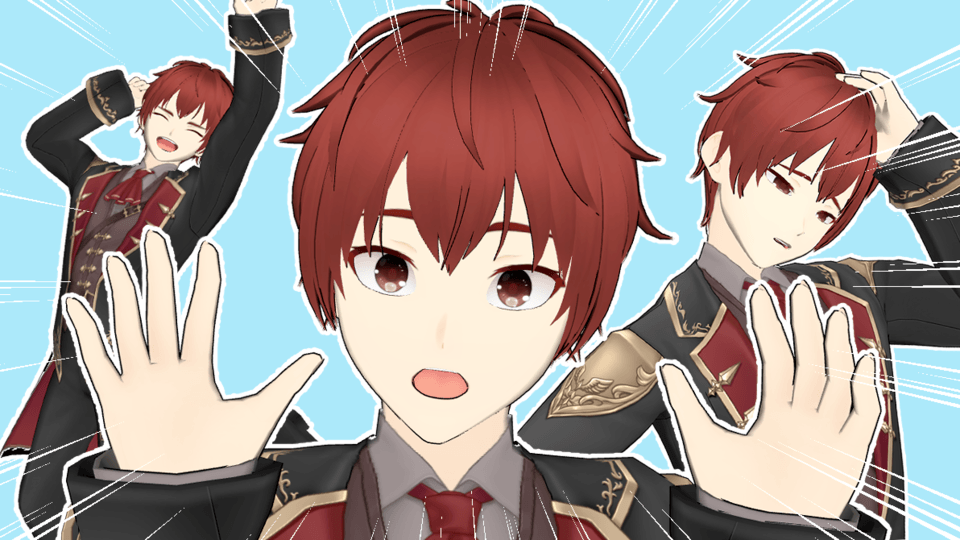How to add a hidden noble to a manuscript created in B4 commercial magazine size
What is a hidden noble?
A hidden noble is a noble that can be put in a small place to be hidden during bookbinding in order to prevent random or missing pages.
This requires a size that can be read by the human eye, and when submitting to a doujinshi printing office, it is generally requested that “each character should be 2 mm or longer, and be placed on all pages in a position that will not be trimmed when finished”.
(An example of a hidden noble placed on the throat side of the manuscript)
The current hidden noble function can only be used for originals that are almost full-size.
≪Crysta EX has a function to add a hidden noble to the original, but the size is fixed at 6pt = 2.12mm according to the resolution of the original and cannot be changed. If you reduce the print data at the time of export, the hidden noble is also exported smaller accordingly. (As of ver.1.94)
For this reason, if a manuscript made with a B4 template for commercial magazines is reduced to 94% or less, the data will not be accepted by the printing shop.
◎ The reduction ratio when printing a manuscript drawn on a B4 template with a general doujinshi size (finished B5) is about 82%. In other words, if you create a doujinshi for a manuscript created in the size of a commercial magazine, you can not use the hidden noble function in most cases.
In this TIPS, we will explain how to perform the assignment work when you still need to put in a hidden noble using only Christa EX.
1. Create cmc file for assignment
た め Create a new cmc file for allocating text manuscripts in order to output the hidden noble in the correct size.
Select a document setting that has a “finished size” that matches the format of the book to be printed and a “bleed width” of 3 mm or more (or 5 mm or more at the request of the printing shop).
This time, we used the “B6 size monochrome 600dpi” template, which is included in Christa from the beginning.
通常 Set “Non-noble” to normal and “Hidden non-nomble” to “Yes”.
When creating a new file, you can only create a cmc file of up to 100 pages, but if you add new pages later, you can combine more than 100 pages into one file.
2. Export the data of "until the dragonfly is cut off" without a hidden noble
Next, open the cmc file of the B4 manuscript data that will be the printing source, and write the reduced print data.
≪If a hidden noble has already been set for this data, open “Change basic work settings” and turn off the hidden noble check. If you are setting a normal noble, leave it ON.
It is necessary to write out the print data in the size that fits the target format and the range up to `` cutting out the registration marks '', but the setting of the trimming and resolution varies depending on the document, and the exact size is calculated It may be difficult.
Therefore, in the export option, once select “to the inside of the register mark” for the output range, and input the number of pixels of the finished size to the desired format.
The relationship between main format, resolution and number of pixels is as follows.
350 dpi (color)
B5: 2508 x 3541 px
A5: 2039 x 2894 px
B6: 1764 x 2508 px
For 600 dpi (monochrome)
B5: 4299 x 6071 px
A5: 3496 x 4961 px
B6: 3024 x 4299 px
Once input, you can print data with an accurate reduction ratio by switching the output range to “Uncut dragonfly” and writing.
The following is an example of output when a monochrome / 600dpi original has a halftone tone.
If you have set a normal noble, also turn on “noble” export.
3. Import the exported data at once
Move to the cmc file for allocation, and place the print data exported in (3) with “File> Batch Read”.
When the placement of the first page is decided, the placement on the remaining pages is completed in a similar manner.
4). Check the state of the hidden noble and export it in full size
You can confirm that the hidden noble is set to an appropriate size "inside" the bleed line. If there is a page with a normal noble set, you can check whether the number is misaligned.
You may feel that the hidden noble is likely to be visible after bookbinding, but the 3mm on the throat side is actually closed with glue, so it is not visible to the reader.
If you export in PSD format with a magnification of 100% using “File> Batch Export”, the data can be submitted to the printing shop.
At that time, select “Until register mark” as the output range.























Comment